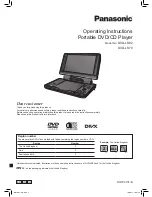
ILER-DDS V2.1 VFO/DDS.
Page 12
DIGITAL NOISE
Noise coming from digital circuits on a radio receptor may be considered as normal when they are of low
level and the listening comfort and quality is not affected.
There are two types of noise: DDS generated spurs and noise from the digital control and display.
The design used on the ILER-DDS guarantees a low spur level when compared with other amateur
products of similar price. In all ILER versions the heterodyne purity is very high either in Rx or Tx. Due to
the filtering used little spurs are generated which may be noticed in reception, and also in transmission.
All tests carried out with our ILER-DDS prototypes with ILER transceivers have been highly
satisfactory.
LCD noise
LCDs are known to be a source of noise. Sometimes one may thing the noises are coming from the RF
generator but they are coming from the display. They may be recognized as they shift in frequency,
especially after a cold start-up. Should you perceive a background noise on your transceiver without any
antenna connected, and the noise changes when you touch or push the LCD, this is an LCD noise.
Encoder noise and other switching/digital noises.
The second, very common source of internal noises on a receiver is the switching of internal signals,
multiplexing, etc, or external signals, such as the ones from the encoder.
When you install the encoder, please remember to place a pair of 100nF capacitors on the encoder
terminals.
If you do a careful and tidy wiring of the ILER-DDS, we are sure that you will get excellent results.
Note:
EA3GCY can’t guarantee the result of fitting an ILER-DDS with receiver or transmitter kits others than
the ones from ea3gcy. The different combination of IF-RF, signal levels, impedances, etc. may let to
unpredictable results. You should know the details of your particular setup and enough expertise to
evaluate the suitability of the ILER-DDS for your purposes.












































